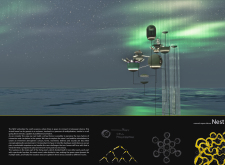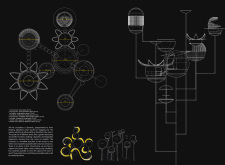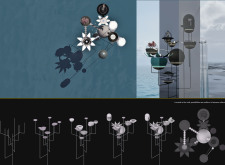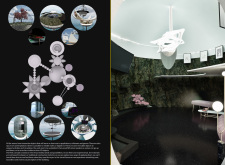5 key facts about this project
The NEST is a unique exploration of virtual living that focuses on enhancing connections and interactions within a modern environment. The design is based on the idea of a nucleus, where spaces grow and evolve like cells in the process of division. The intention is to create a virtual setting that caters to various functions and supports daily life in an imaginative way.
Spatial Organization
The heart of the NEST is its central nucleus, which serves as the main area of the home. This nucleus extends into multifunctional spaces designed for different activities. The living area is split into two sections that encourage socializing while also offering private moments. Outdoor spaces are divided into three parts, providing expanded opportunities for interaction with the surrounding environment.
Dynamic Circulation
An essential characteristic of the NEST is its dynamic movement system, which features platforms that float and allow avatars to navigate freely. This arrangement encourages exploration, enabling users to move easily from one room to another. The pods are positioned at varying heights, resembling a garden that surrounds the nucleus, contributing to a lively and inviting atmosphere throughout the home.
Sensory Experience
The design emphasizes sensory engagement through the thoughtful use of visuals and sounds. Various colors, shapes, and ambient sounds create an immersive environment that captivates users. In this space, each room includes interactive objects that link to various applications, enhancing the overall functionality. This focus on interactivity supports a connected living experience for users.
Functional Adaptability
The workroom in the NEST showcases adaptability with a platform that changes positions to serve different functions. It can be used for display or movement, reflecting modern requirements in virtual environments. The absence of conventional doorways allows for fluid movement, while movable petals can adjust the openness of spaces, providing a balance between privacy and accessibility.
The design culminates in a fresh interpretation of living within a virtual context. It offers an engaging experience characterized by movement, flexibility, and a sense of connection.






















































